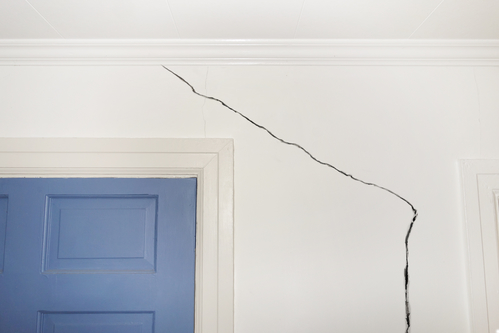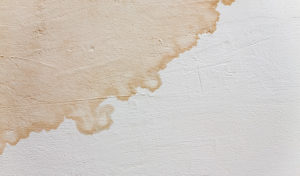Effective Checks and Solutions for Water Stains on Walls
Effective Checks and Solutions for Water Stains on Walls
Blog Article
Almost everyone seems to have his or her own way of thinking about Water Stains on Walls.

Water discolorations on wall surfaces are not positive to the eyes. Your residence needs to lack discolorations on the wall surfaces, roof covering, or floorings. That is the optimal state of a house and its structures. Often it appears nearly inevitable to experience water discolorations on wall surfaces in houses.
Home owners living in humid areas frequently handle the fear of water discolorations on wall surfaces. That does not have to be the situation for you. With exact as well as all-around information on the sources of water spots and prompt fixing procedures, you will constantly be an action ahead of such occurrences. So, this article assures to be a practical guide for you.
3 Usual Causes of Water Discolorations on Walls
Unlike popular belief, water discolorations on walls do not constantly stem from inadequate building products. There are several root causes of water stains on wall surfaces. These include:
Poor Drain
When making a building plan, it is critical to guarantee ample drain. This will certainly avoid water from permeating into the walls. Where the water drainage system is obstructed or nonexistent, underground dampness builds up. This web links to excessive dampness that you discover on the wall surfaces of your building.
The leading cause of damp wall surfaces, in this case, can be a bad drain system. It can additionally be due to bad monitoring of sewage pipes that go through the structure.
Damp
When hot damp air meets completely dry cold air, it triggers water beads to base on the wall surfaces of buildings. When there is vapor from food preparation or showers, this occurs in washrooms and kitchens. The water droplets can discolor the surrounding walls in these parts of your house and also infect various other locations.
Damp or condensation impacts the roofing and also wall surfaces of buildings. When the wall is wet, it produces an appropriate atmosphere for the growth of fungi and germs.
Pipeline Leaks
The majority of residences have a network of pipes within the wall surfaces. This guarantees that the pipes are faraway from the reach of devastating rats. It constantly boosts the viability of such pipelines, as there is little oxygen within the wall surfaces. This prevents corrosion.
A downside to this is that water leakage influences the wall surfaces of the structure and also creates extensive damages. An indicator of defective pipes is the appearance of a water stain on the wall surface.
Water Discolorations on Wall Surface: Repair Service Tips
When dealing with water stains, house owners would typically want a fast fix. They would quickly recognize this is counterproductive as the water discolorations repeat. Here are a couple of useful suggestions that will certainly lead you in the repair service of water spots on wall surfaces:
Pro Tip
A houseplant in your home additionally increases its humidity. So, if your house is already damp, you might intend to present houseplants with minimal transpiration. An instance of appropriate houseplants is succulents.
Conclusion
Although nobody wants to have water spots on walls in their home, it can occur to the most effective of us. This article gives you take advantage of, as you currently understand exactly how to manage this mishap if it does occur.
It is always best to hire specialist solutions to help deal with the damages in your home.
Occasionally it seems nearly unpreventable to experience water stains on wall surfaces in residences.
Contrary to popular idea, water discolorations on walls do not always stem from poor building materials. There are a number of causes of water spots on walls. The water droplets can discolor the bordering wall surfaces in these components of your residence and also spread to other areas.
Right here are a few valuable ideas that will certainly lead you in the fixing of water discolorations on walls:
CHECKING FOR WATER DAMAGE
Water damage can be costly, and it may begin before you even notice the first signs of trouble. Water damage can cause mold and mildew in your walls and floors, which can create an abundance of health concerns for your family. It can also lead to costly repairs of various appliances and general home fixtures. To avoid the pricey consequences of water damage, here are Warner Service s top 5 places you should check:
The walls The easiest place to spot the beginnings of water damage is on the walls and ceilings of your home. If water damage is present, there will most likely be water stains, especially around the windows and doorframes, and/or cracks in the drywall. If a stain looks unusual (discolored to brown, black or gray, raised texture), has a swollen appearance or is soft to the touch, contact a professional immediately. The pipes To avoid water damage, consistently check the pipes in your kitchen (especially the dishwasher and ice maker), bathrooms, laundry room (specifically washing machines) and basement for corrosion, leaks and water stains. Pay special attention to where the pipes connect in your home and the location of caulking around the bathroom fixtures, including toilets, sinks, showers and tubs. Missing or loose caulking and grout could be signs of leaking water. This seepage can also quickly cause mold and rust, so double check your water heater and tank for wet spots on the floor. The floor Water damage is very easy to spot on the floor. Look for any warping or buckling of the material, especially in the basement. If your home has wood flooring, look for bright white or dark stains. If your home has carpeting, keep it dry and clean. A damp carpet that smells of mold could cause water damage and health problems. To avoid this, consider installing floor pans under your appliances to help prevent damages from small, slow and undetected leaks. The basement and attic If your basement or attic smells odd check for mold and mildew around the area, especially the valley where the roof meets. While you are inspecting those areas, check for wall cracks, floor stains, rust and dampness in the insulation. If you live in a colder and/or rainier climate, perform routine checks for water damage from melting snow or ice and rain. The exterior Check the roof for damaged flashing and missing, cracked or curled shingles. There should also be no standing water anywhere outside your home. This could be caused by puddles, leaky rain gutters or hoses, poor drainage, or short gutter spouts. Invest in a sump pump system or water flow monitoring system, and perform routine maintenance on these outdoor appliances to avoid indoor water damage.

Hopefully you enjoyed reading our part about Indicators of Water Damage Behind Walls. Thank you so much for finding the time to browse our posting. Sharing is nice. You never know, you could be helping someone out. I thank you for reading our article about Indicators of Water Damage Behind Walls.
Click Here Report this page